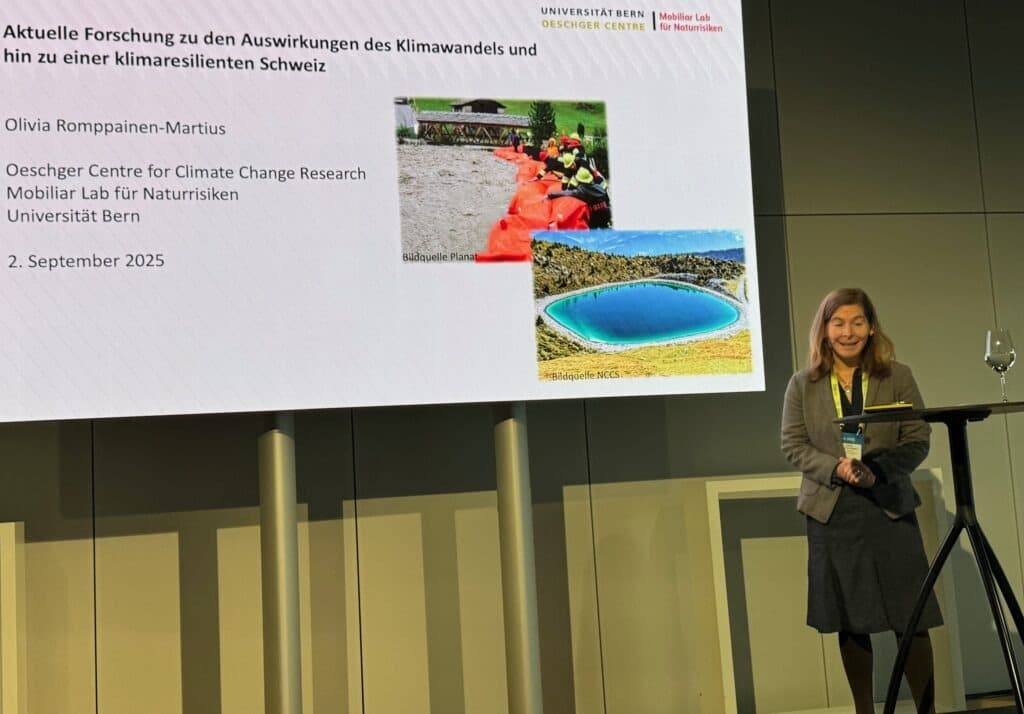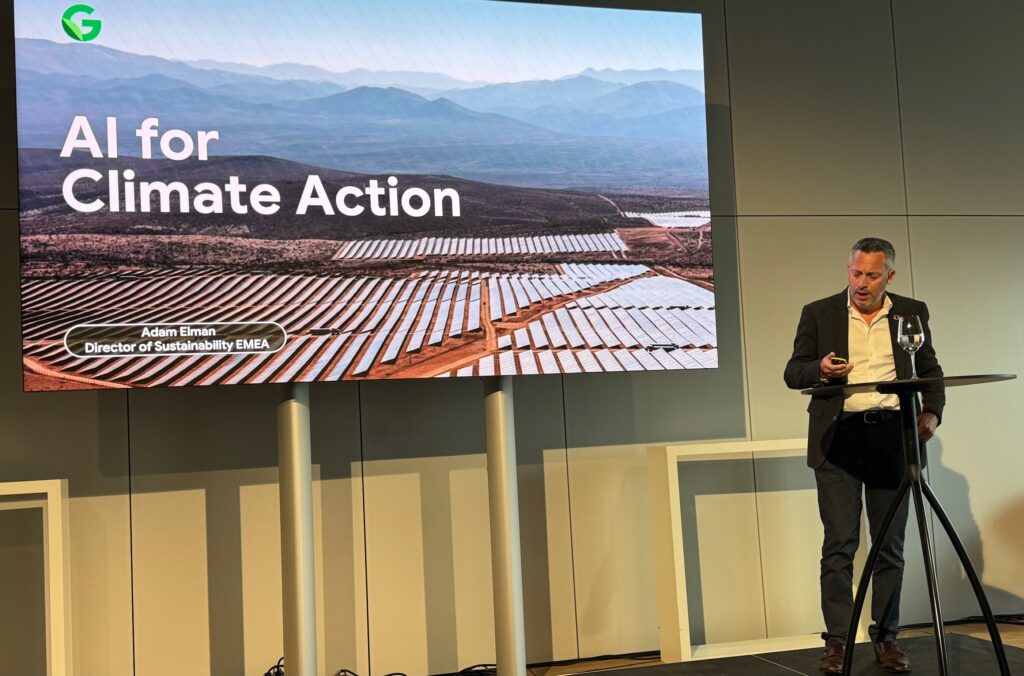When extreme weather becomes the norm
12 September, 2025 | Current General
Switzerland is increasingly experiencing heatwaves, heavy rain and flooding. Climate researcher Olivia Romppainen-Martius explains why adaptation is not a luxury but a survival strategy and why artificial intelligence can play a role in this.
Just a few decades ago, heavy rainfall, heatwaves and floods were considered rare exceptions. Today, they are occurring more and more frequently, with massive consequences for communities, infrastructure and insurance companies. Those who live in the Alps feel the change directly: melting glaciers destabilize slopes, suddenly rising rivers flood valleys.
“We are increasingly confronted with extreme weather events that have a major impact and test our ability to adapt,” says Prof. Dr. Olivia Romppainen-Martius, Professor of Climate Impact Research at the University of Bern and Co-Head of the Mobiliar Lab for Natural Risks.




Risk analyses as a basis
The climate researcher and her team are working on models that combine damage forecasts with hydrological simulations. They show which regions are particularly at risk and which measures would have the greatest effect. “We are often accused of being too alarmist. But such risk analyses are absolutely essential as a basis for adaptation measures,” emphasizes Romppainen-Martius.
Your data should not cause panic, but rather help decision-makers such as local authorities, insurance companies and politicians. Because if you know where the risks lie at an early stage, you can make targeted investments and save lives in an emergency.
Fairness and acceptance
Adaptation means more than dams and retention basins. The researcher argues that social issues should also be taken into account: Who is particularly vulnerable? Who bears the costs? And how can acceptance be created among the population? She focuses on projects that offer added value. Reservoirs that not only cushion floods, but also ensure irrigation in times of drought. Protection systems that also supply energy. Solutions that combine safety with additional benefits.
Hope through artificial intelligence
Another tool could significantly improve climate adaptation: Artificial intelligence. “The next generation of weather forecasts will also use AI models. The hope is that this will give us more warning time, especially for thunderstorms,” explains Romppainen-Matius.
The models are not yet perfect. They require huge amounts of data and weather conditions are often chaotic. But the researcher sees enormous potential: more precision, better reaction options and, ideally, additional hours of preparation time.
Adaptation as a survival strategy
Switzerland is facing the challenge of reinventing itself: Away from the image of a safe Alpine country towards a society that accepts extreme weather as part of its reality and prepares for it. Romppainen-Martius draws a clear conclusion: adaptation is neither a marginal issue nor a luxury. It is the prerequisite for ensuring that valleys remain habitable, cities are protected and Switzerland remains resilient in times of climate change.
Binci Heeb
Read also: The invisible cloud: why contrails are more harmful to the climate than we think
Suche:
Sponsoren:





Categories
- Blog (31)
- Company portraits (2)
- Current (217)
- General (196)
- Interviews (26)
- Jobs (1)
- Nicht kategorisiert (731)
- Podcasts (39)
- Video (15)